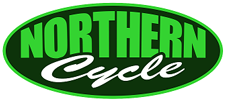Trek Bicycles
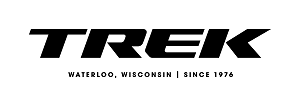
You know the name, you know the legacy, but do you know the story?In a rented red barn in Waterloo, Wisconsin, five friends got together to hand build steel touring bicycles. The year was 1976, and the Trek Bicycle Company was born.
It was an era when the most popular bicycles were being built in Europe and Japan, yet only three years later, Trek had already gained a stellar reputation for passion and quality and gained a loyal following.
As their reputation grew Trek outgrew the old barn, so they built a new facility, this time in an old cornfield. The cycling world would never be the same.
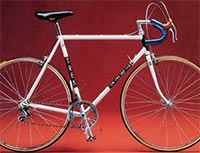 Expansion
Expansion
In 1982, Trek dove into the world of racing bicycles with the introduction of their 750/950 series race bike (left). The move signified a commitment to pushing racing technology to new levels and showed their dedication to making fine bicycles for all cyclists.
And, a year later, with the sport still in its infancy and only a handful of companies making off-roaders, Trek joined the mountain-bike revolution with their 820, which was soon a best-seller.
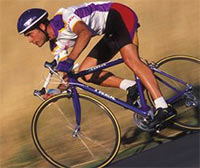 Pushing the limits
Pushing the limits
Not one to rest on conventional technology, Trek released the revolutionary 2300 in 1987 (left). The front triangle was made of a new material from the aerospace industry called carbon fiber. Two years later, Trek attempted to outsource a monocoque carbon frame that failed to meet their rigid standards. This failure instilled Trek with the determination to pursue carbon technology and control the entire manufacturing process themselves.
OCLV carbon was born, and by '92, frames crafted with it exceeded aerospace quality controls, became the lightest production frames in the world and set the standard for American-made quality that would go on to make Tour de France history.
Meanwhile, in the dirt, Trek nabbed 10th place at the first-ever UCI Mountain-Bike World Championships under a young rider by the name of Travis Brown. Then, as the mountain-bike world explored full-suspension designs, Trek entered the fray with a simple, single-pivot bike, the 8900. And, in '93, fat-tire pioneer and iconoclast, Gary Fisher joined the Trek family and brought with him the most popular name in off-road cycling. Also that year, OCLV carbon hit the dirt with the lightest production mountain frame, the 9900. It became the official bike of the first Trek-sponsored mountain-bike team.
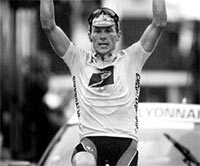 The year it all changed
The year it all changed
In 1997, Trek signed a former World Champion roadie when he was dropped from his European team after being diagnosed with cancer. His name was Lance Armstrong. A year later, Trek created the Advanced Concept Group, whose sole focus was to pursue new applications of frame and suspension design. Their motto: "From trikes to the Tour de France."
And their technology allowed Lance Armstrong to win the '99 Tour de France aboard Trek's production 5200. He became the first American to win on an American team, on an American bike. The 5200 went on to become one of the best-selling bikes ever.
And, by 2005, Trek and Lance had done the unthinkable rewriting the history books with 7 consecutive Tour wins. And, all of the bikes Lance rode were available to the public. Plus, that same year, Tom Danielson won America's biggest road race, the Tour of Georgia, and Paolo Savoldelli won the Giro d'Italia, both on Trek Madone SL 5.9s
Everything else is history
Lance retired, memories fade, but what hasn't faded is Trek's passion and innovation. They continue to set new benchmarks in comfort, speed and ride quality. They use a blank-slate approach — no givens or constraints. Anything and everything is questioned. The only requirement: no compromises between ride quality and weight. Merge form and function. Make it striking and make it beautiful.
From 8 Tours de France in 9 years, to Ironman competitions, from Olympic gold medals to Red Bull Rampages, from NORBA Nationals to World Cup victories, Trek has been on top of the podium at every level of cycling.
Check out our wide selection of Trek bicycles and experience the difference soon!

